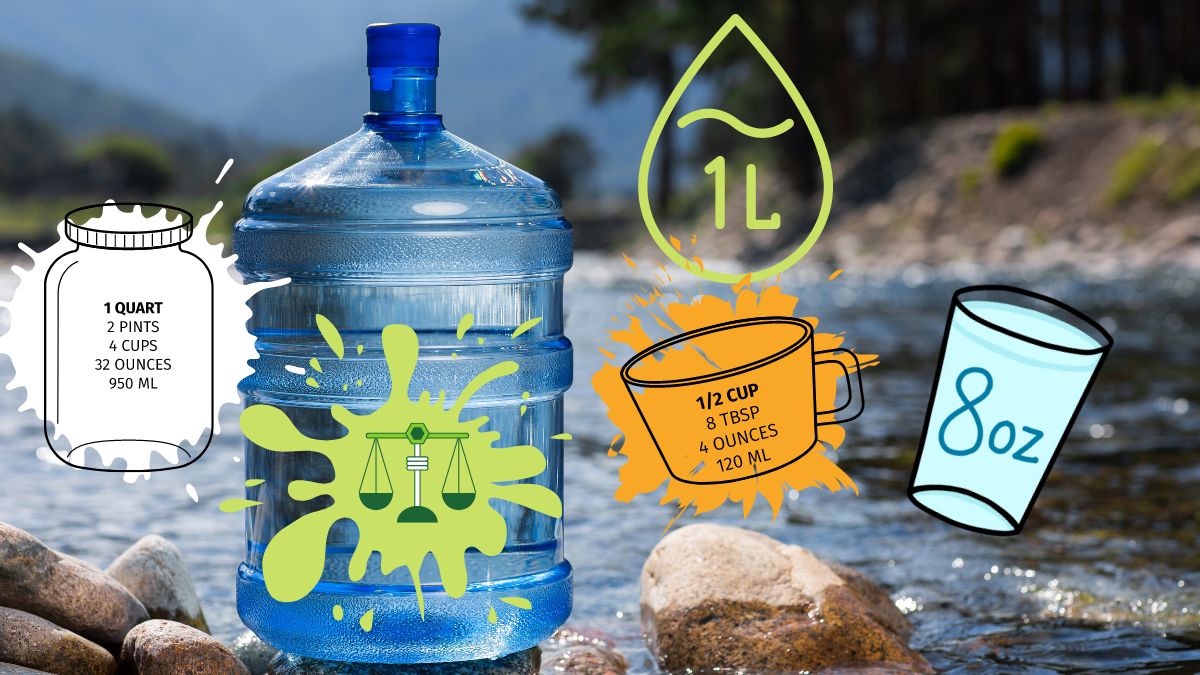You might want to know how many liters are in a gallon exactly but not trust Google’s simple results. Actually, you are right. The calculations just ‘depend.’ Besides liters to Gallon conversion, Here are the exact calculations for both US and UK. and some other most-asked definite conversions.
How Many Liters Are In A Gallon Exactly?
This is an excellent test question that may be asked of anyone living in the United States or the UK.
Due to the fact that a gallon is not always a gallon, one must use caution and precision in this situation. There are two primary gallons that are defined: the British imperial gallon and the US customary gallon. Both of these gallons are often used.
The latter is only used for liquids; historically, there has been some reference to a dry US gallon (which is of yet a different size), but it is not mentioned in NIST Handbook 44 Appendix C (2017) and appears to have fallen out of use, so I will not include that one. The dry US gallon is of yet a different size.
1 British imperial gallon is equal to 4.54 609 liters, and this measurement system is used in the United Kingdom.

The volume of liquid contained in one US customary gallon is equivalent to 231 cubic inches. Because one inch is equal to one-thirty-sixth of a yard and one meter is equal to 0.9144 yards, one inch is equal to 0.0254 meters, which is the same as 0.254 decimeters.
Thus, 1 [US] gal = 231 × (0.254 dm)³ = 3.785 411 784 dm³ = 3.785 411 784 L because 1 L = 1 dm³.
Each and every definition is, by definition, accurate, and each and every calculation has been performed accurately. Therefore, the conversions that are in bold are the precise quantities; there has been no rounding. You may be handling measurements with nowhere near that level of precision (or accuracy), in which case you may wish to round for your practical use of the values that I have provided.
Alternatively, you may need to know the exact value in order to avoid calculation conflicts. If this is the case, you should know it. I will give you all of the numbers so that you may decide how many there should be rather than having me decide for you how many there should be.
A few distinct varieties of gallons are available, such as dry and liquid US gallons.
The following are the conversion factors from gallons to liters: (for US, UK, and for both fluid and dry measurements). Multiply the number of liters you have by the conversion factor to get the number of gallons you have.
- 1 Gallon (Fluid, US 9= 3.7854118 Liters
- 1 United States gallon (dry) is equal to 4.4048838 liters
- 1 gallon in the UK is equal to 4.54609 liters
Because one gallon is equal to 231 cubic inches and one liter is equal to the volume of one kilogram of water (1000 mL or 61.0237 cubic inches), the answer to the question “How many liters are in a gallon?” is 3.7854118. This is due to the fact that the volume of one liter is equal to the volume of one kilogram of water.
How many fluid ounces are in 1 liter?
In order to provide a decent response to this question, we need to have the ability to convert between liters and an American volume measuring unit, as well as between that unit and ounces. In order to avoid marking a test in which I just provided the students the conversion factor, 1 gallon is equal to 3.785 liters; I’m going to answer this question instead.
Regarding the second conversion, one gallon is equal to 128 ounces of liquids. These equivalences may be turned into conversion factors that alter the units but do not affect the value. For example, if a=b, then a/b = 1 and b/a = 1, and multiplication by 1 does not change the value. Now all that remains is to create fractions that will provide us with the appropriate unit:

Take note of the units: because we are comparing gallons to gallons and liters to liters, the result is that we are left with ounces. This almost ensures that the solution is correct; nevertheless, if the units we need do not naturally come from the calculation, then the answer is certain to be incorrect.
How many ounces are in a gallon?
One gallon of fluid in the United States is equal to 128 US fluid ounces.
An imperial gallon is equivalent to 153.722 fluid ounces from the United States.
A gallon of Imperial measurement is equal to 160 fluid ounces of Imperial measurement.
A United States gallon may be broken down into 133.228 imperial fluid ounces.
If you are referring to the unit of mass measurement known as an ounce, the answer to your question relies on the density of the liquid.
How many grams are in an ounce?
This is one of those queries designed to trip you up. The conversion from grams to ounces may be done using one of two different units of measurement. A method known as the AVP is typically used in the United States.
According to this measure, one ounce of AVP is equivalent to 28 grams. The second system is called the Troy system, and it is about 10 percent heavier than the ounce system. An ounce of troy weight is equal to 31.1 grams. This is the technique that is used when dealing with precious metals such as gold and silver.
How many ounces are equivalent to 100 grams?
- 2.54lbs=1000g 1KG
- 2.54lbs x 16oz/lb=40.64oz=1000g
- 40.64oz/10 =4.064oz for 100g (1000/10)
Conclusion
If you do not mean an ounce of fluid when you say “ounce,” then you will need to be familiar with the density of whatever it is that you measure in a half gallon.
You must still specify whether you are referring to US fluid ounces and gallons or Imperial fluid ounces and gallons to avoid confusion. There are several key distinctions. While the Imperial and US fluid ounces are almost identical (to within approximately 4 percent of one another), there is a substantial difference between the two gallons.

